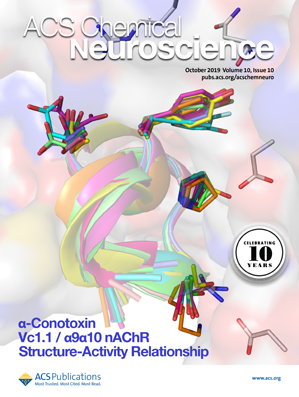Optimization of blue LED photo-flow synthesis in continuous flow reactors using design of experiments (DoE): Efficient synthesis of diverse diaryl ketones
IF 4.1
3区 医学
Q2 BIOCHEMISTRY & MOLECULAR BIOLOGY
引用次数: 0
Abstract
Herein, we demonstrated the optimization of a blue LED (450 nm) induced C-C bond formation between various aryl and heteroaryl aldehydes with 1,4-quinones at room temperature in ethyl acetate using Design of Experiments (DoE). This reaction was conducted within a flow (micro and milli-fluidic) device using a millifluidic meandering channel reactor (MC2), resulting in a library of diversely substituted diaryl ketones with moderate to good yields. Control experiments and density functional theory (DFT) based computational investigations were performed to elucidate the reaction mechanism.

利用实验设计(DoE)优化连续流反应器中的蓝光 LED 光流合成:高效合成多种二芳基酮
在此,我们利用实验设计(DoE),展示了室温下在乙酸乙酯中利用蓝光 LED(450 纳米)诱导各种芳基和杂芳基醛与 1,4-醌之间形成 C-C 键的优化方法。该反应是在一个使用毫流体蜿蜒通道反应器(MC2)的流动(微流体和毫流体)装置中进行的,从而产生了一个具有中等至良好产率的多种取代的二芳基酮库。为阐明反应机理,进行了控制实验和基于密度泛函理论(DFT)的计算研究。
本文章由计算机程序翻译,如有差异,请以英文原文为准。
求助全文
约1分钟内获得全文
求助全文
来源期刊

ACS Chemical Neuroscience
BIOCHEMISTRY & MOLECULAR BIOLOGY-CHEMISTRY, MEDICINAL
CiteScore
9.20
自引率
4.00%
发文量
323
审稿时长
1 months
期刊介绍:
ACS Chemical Neuroscience publishes high-quality research articles and reviews that showcase chemical, quantitative biological, biophysical and bioengineering approaches to the understanding of the nervous system and to the development of new treatments for neurological disorders. Research in the journal focuses on aspects of chemical neurobiology and bio-neurochemistry such as the following:
Neurotransmitters and receptors
Neuropharmaceuticals and therapeutics
Neural development—Plasticity, and degeneration
Chemical, physical, and computational methods in neuroscience
Neuronal diseases—basis, detection, and treatment
Mechanism of aging, learning, memory and behavior
Pain and sensory processing
Neurotoxins
Neuroscience-inspired bioengineering
Development of methods in chemical neurobiology
Neuroimaging agents and technologies
Animal models for central nervous system diseases
Behavioral research
 求助内容:
求助内容: 应助结果提醒方式:
应助结果提醒方式:


